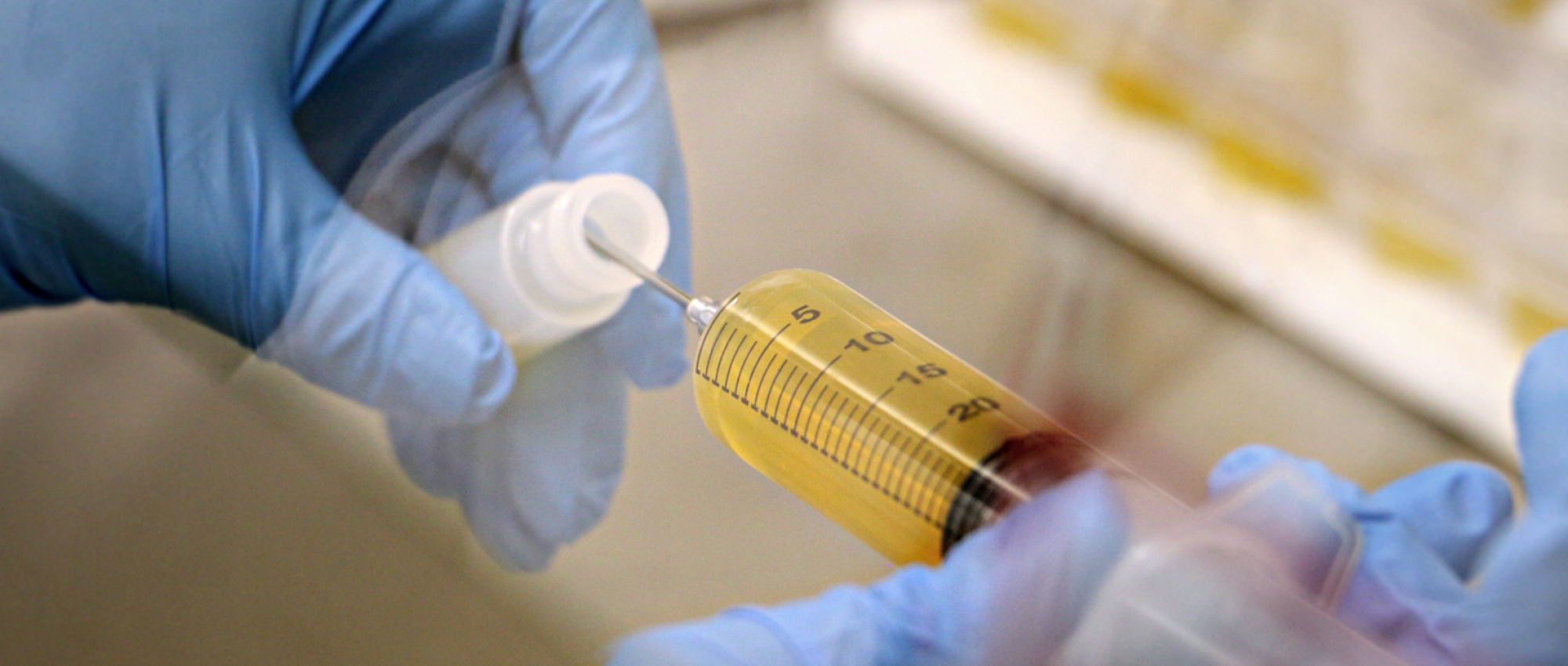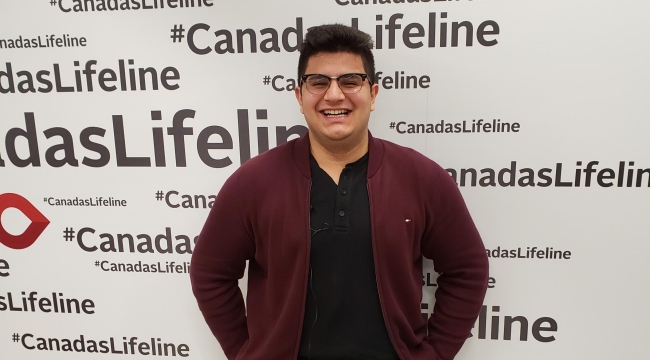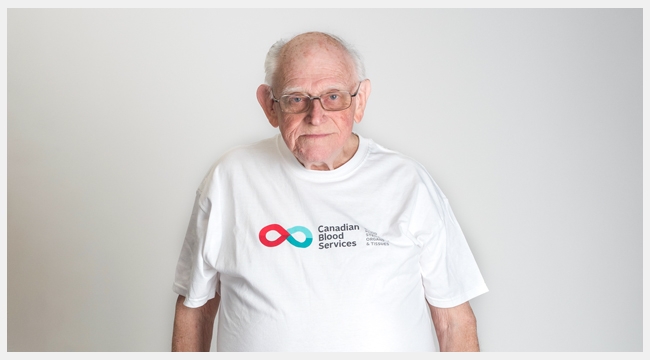The need goes on #5: Stepping up for a child with a special need
Special plasma eye drops for a child with a rare condition.
It started when a physician contacted one of the medical directors at Canadian Blood Services, Dr. Kathryn Webert, asking how to obtain a specialized medication. The physician had a patient, a small child, with a very rare condition — plasminogen deficiency — that was causing the child’s eyes to fill with woody growths. Dr. Webert immediately started an internal discussion about how Canadian Blood Services could help.
“Plasminogen is a precursor to plasmin, which breaks down clots. Plasmin in the tears usually keeps the eyes free of clot-like woody growths,” says Dr. William Sheffield, a plasma expert and associate director of research at Canadian Blood Services’ Centre for Innovation. “It’s such a rare disorder — literally one in a million — there’s not a ton of literature. We’re only aware of this one patient in Canada.”
These woody growths can be surgically removed, and the child was scheduled to have the surgery. However, to stop them from growing back, the child needed special eye drops made from human plasma containing plasminogen.
“What do we do when there’s a child in Canada with a rare disorder, and we’re the only ones who can help? We had to work together and find a way,” says Craig Jenkins, senior manager of product and process development at Canadian Blood Services.
It was up to him and his team to figure out how to do it.
“The first question was, can we get this product from elsewhere in the world? When those avenues were exhausted, we knew we had to figure something out within our own regulatory environment, working through Health Canada,” Jenkins says.
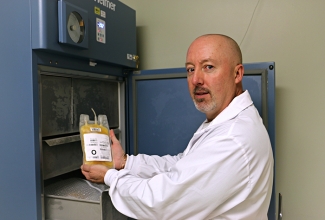
To begin, Jenkins obtained two plasma units destined for research to see what the team could do with them. Dr. Sheffield’s lab was responsible for quantifying the amount of plasminogen in the plasma, to make sure it was in the normal range to help the child. Then, through Health Canada’s Special Access Programme, Canadian Blood Services got approval to prepare and ship 680 vials of the plasma eye drops.
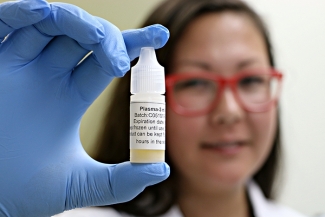
But the team still had more work to do. “We didn’t have any eye drop vials to put this stuff in, or an automated method for filling vials, or a process for shipping the product. These were all things we had to figure out before we could proceed,” Jenkins says.
Jenkins and his colleagues found special ophthalmic vials through a medical supplier. They had to manually transfer the plasma into these vials and then pack the vials in dry ice for shipment to the local blood bank. The blood bank is storing the vials, and gives them to the family as needed. The child’s parents can then administer the drops to the child. By all accounts, the eye drops are working, and the child is doing well.
“This project embodies what we hope we’re doing every day. It’s obvious this patient needed one medicine only we could provide,” says Dr. Sheffield.
Jenkins relates that both as parents and as Canadian Blood Services employees, it’s something he and Dr. Sheffield felt a personal responsibility to do.
“There’s nothing I wouldn’t have done to fulfill this request, knowing full well it was something only we could do. At the end of the day, Canadian Blood Services stepped up and got this done. A child is receiving needed treatment because we were adamant that we would come up with a solution,” he says.
The risk of COVID-19 is prompting people across Canada to avoid public spaces of all kinds. However, the need for blood products continues, and our donor centres continue to be safe places to visit with appropriate social distancing measures in place. Our website is updated daily with information about our own response to COVID-19 including our measures to keep donors safe. To make an appointment you can download the GiveBlood app, call 1 888 2 DONATE (1-888-236-6283) or book now at blood.ca.
